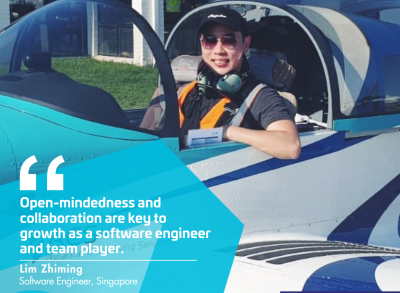Introducing the Artificial Intelligence Toolkit that makes AI simple for critical decision-making

At the heart of Thales’s AI Toolkit is a machine learning algorithmic process called Genetic Fuzzy Tree, that breaks down complex problems hierarchically and in human-like non-binary fashion, making sub-decisions whenever possible. This concept was initially developed by US startup Psibernetix, who joined the Thales group in 2018. The immense capabilities offered by Genetic Fuzzy Tree had notably been showcased in 2016 when they were put to the test in a US military project aimed at controlling the flights of Unmanned Combat Aerial Vehicles in air-to-air combat missions within a high-fidelity simulation environment. In the trials, the system defeated multiple renowned fighter pilots and expert tacticians. When the results went public, the story became a viral phenomenon that trended on social media.
 According to Thales’s Nick Ernest (pictured), whose PhD research resulted in the Genetic Fuzzy Tree methodology, “our aim is to take something which is intrinsically complex and make it simple! Above all, what makes our systems different to those in the field of deep leaning is that they are entirely transparent and operate in the linguistic domain. Furthermore, due to the computationally accessible underlying mathematics, they can be formally verified and validated or certified; whereas other methods cannot. Every decision that is made can be broken down into a logical reasoning path. Performance levels are as high as with other AI methods, but we offer key benefits that bring value to safety-critical applications: computationally efficient, explainable AI for safety-driven markets.”
According to Thales’s Nick Ernest (pictured), whose PhD research resulted in the Genetic Fuzzy Tree methodology, “our aim is to take something which is intrinsically complex and make it simple! Above all, what makes our systems different to those in the field of deep leaning is that they are entirely transparent and operate in the linguistic domain. Furthermore, due to the computationally accessible underlying mathematics, they can be formally verified and validated or certified; whereas other methods cannot. Every decision that is made can be broken down into a logical reasoning path. Performance levels are as high as with other AI methods, but we offer key benefits that bring value to safety-critical applications: computationally efficient, explainable AI for safety-driven markets.”
At Thales, the Genetic Fuzzy Tree methodology has been extensively taken on board, and has notably been applied to COMBI, a bidirectional operator/system translator concept currently in development which was awarded the European Defence Agency’s 2021 Defence Innovation Prize. The COMBI concept is the first to integrate human ‘intentions’ in a system and provides the means of translating these high-level operator intentions between the operator and the multiple intelligent systems in a dynamic manner throughout a flight mission. Then, the pilot evaluates the information from those systems to make the best decision.
As the COMBI application demonstrates, by combining explainability and formal verification capabilities, the Thales AI Toolkit is designed to solve complex decision-making issues through a trustable and low-power-consumption solution. As such, it is ideally suited to mission- and safety-critical applications in the areas of aeronautics (fighter aircraft, helicopters, civil transport), automotive, healthcare, and any sector that similarly requires predictive analytics, autonomous operations, database decision aids, or large-scale cooperative asset control and management.
|
Three components and three service levels The AI Toolkit offered by Thales comprises three tools. First, a software package that enables the creation of fuzzy logic models, defining the smart agent that incorporates the flow of events from input to output data, and on to inner loop and platform control. The second tool delivers an intelligent and dynamic environment that can be used to optimize the smart agent. Finally, a formal verification tool scans all flows and processes to ensure they meet all requirements throughout. The rule of three also extends to the choice of flexible service levels being proposed. At level 1, the customer develops their own AI application with the AI Toolkit under licence, while Thales provides training and maintenance services. For level 2, Thales works alongside the customer to develop their application. For level 3, Thales develops the entire application for the customer. |




